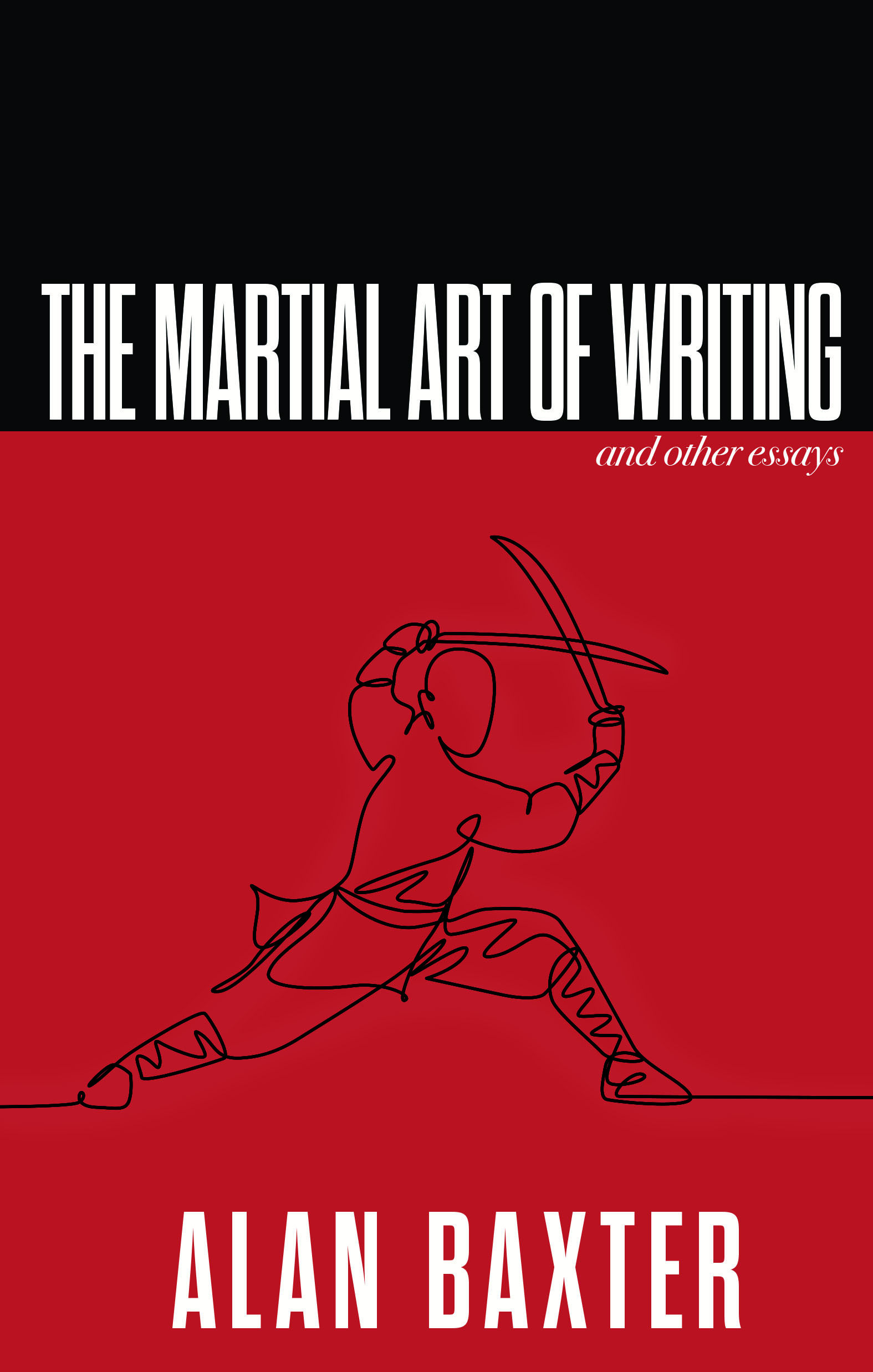THE MARTIAL ART OF WRITING
Essays on the discipline and art of writing, filtered through decades of experience as a horror writer and martial arts instructor.
“The thing about an art — and one of the things I love about both Kung Fu and writing — is that you’re never finished. No matter how good you get, no matter how much you achieve, you can always get better.”
In these essays, Alan Baxter—the author of cult horror hits like The Roo, the Eli Carver series, and the Australian Shadows Award-winners Crow Shine and Served Cold—explores the relationships between horror fiction, a writer’s craft and discipline, and the lessons brought to writing from his almost 40 years as a kung-fu practitioner and instructor.
Drawn from presentations, blog posts, and articles exploring his own process, The Martial Art of Writing features Baxter’s interrogation of the similarities between his kung fu and writing practices, the next steps that need to be taken when you realise your book is broken, writing killer fight scenes, embracing your darker impulses as a writer, and much more.
Whether you’re a fan of Baxter’s dark imagination looking to plumb the origins of his nightmarish fiction, or an aspiring writer with a penchant for action and dark themes, this chapbook provides a glimpse into the mind and processes of one of Australia’s most prominent writers of horror fiction.
Praise for The Martial Art of Writing
“Alan Baxter’s brief how-to guide, The Martial Art of Writing and Other Essays incorporates the bitter, and the inversion of typical advice. One piece simply reads “Never give up”, but it is followed by a longer chapter on a novel manuscript he realizes is broken. In “Grabbed by the Throat or Gently Teased?” he determines, via a reading of China Miéville’s Perdido Street Station that the old saw of starting a story with a “hook”—say, an action set-piece or the introduction of a protagonist and the initiating incident—is false, or at least can be false. There are many ways to tantalize a reader into continuing, and Miéville’s intense description of setting works as well as any rock ’em-sock ’em. Baxter’s strength is, of course, his fight scene advice. Much like with sex scenes, it’s easy to go on too long, and readers with experience often find them as embarrassing as the innocent find them inexplicable. As my teacher often says before punching me in the face, “Don’t wait your turn.” Baxter notes that fights are chaotic, dynamic, and are almost never a matter of mere trading blows. He describes the adrenaline dump that everyone experiences in a fight, and how many techniques go right out the window, and the primal emotionality of fighting. Let your winners puke and cry! (Martial arts also informs his excellent advice not to sit around all day writing—“get up and move around once or twice every hour AT LEAST.”) The Martial Art of Writing is a short read, and some of it is a simple recitation of the basics, but like any martial artist knows, success comes from perfecting the basics. Read it while holding a low horse stance.” – Nick Mamatas in Apex Magazine


